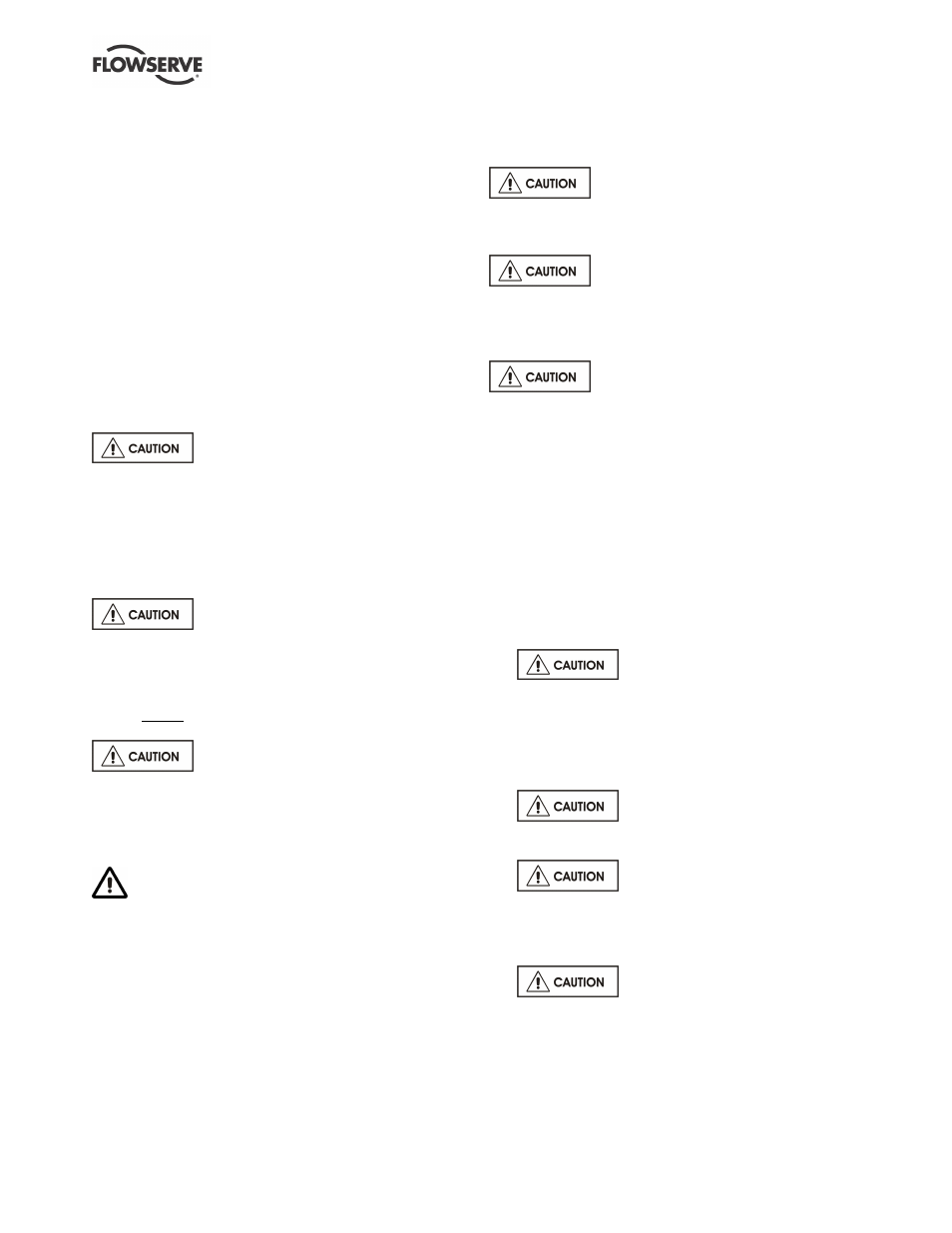Flowserve CPXV fitted with WW User Manual
Page 17

CPXV - WW/CW USER INSTRUCTIONS ENGLISH 85392698 10-09
Page 17 of 36
flowserve.com
5.2.5.2 Grease lubricated bearings
When grease nipples are fitted, one charge between
grease changes is advisable for most operating
conditions; ie 2 000 hours interval. Normal intervals
between grease changes are 4 000 hours or at least
every 6 months.
The characteristics of the installation and severity of
service will determine the frequency of lubrication.
Lubricant and bearing temperature analysis can be
useful in optimizing lubricant change intervals.
The bearing temperature may be allowed to rise to
55 ºC (99 ºF) above ambient, but should not exceed
95 ºC (204 ºF). For most operating conditions, a
quality grease having a lithium soap base and NLGI
consistency of No 2 or No 3 is recommended. The
drop point should exceed 175 ºC (350 ºF).
Never mix greases containing different
bases, thickeners or additives.
5.3 Impeller clearance
This is preset - see section 6.7, Setting impeller
clearance.
5.4 Direction of rotation
Serious damage can result if the pump
is started or run in the wrong direction of rotation.
The pump is shipped with the coupling element
removed. Ensure the direction of rotation of the motor is
correct before fitting the coupling element. Direction of
rotation must correspond to the direction arrow.
If maintenance work has been carried
out to the site's electricity supply, the direction of
rotation should be re-checked as above in case the
supply phasing has been altered.
5.5 Guarding
Guarding is supplied fitted to the pump set.
Fasteners for guards must remain captive in the guard
to comply with the Machinery Directive 2006/42/EC.
When releasing guards, the fasteners must be
unscrewed in an appropriate way to ensure that the
fasteners remain captive. Whenever guarding is
removed or disturbed ensure that all the protective
guards are securely refitted prior to start-up.
5.6 Priming and auxiliary supplies
5.6.1 Filling and priming
The pump end needs to be completely
submerged in the product.
5.6.2 Auxiliary supplies
Ensure all electrical, hydraulic,
pneumatic, sealant and lubrication systems (as
applicable) are connected and operational.
5.6.3 Pumps fitted with a heating jacket
The pump should be pre-heated for at
least one hour using steam through the heating jacket
before hot liquid is brought into the pump. The
quantity, temperature and pressure can be obtained
from the dimensional drawing. This action is
important to avoid distortion and maintain the gap
between impeller and casing.
Ensure pump is electrically isolated. Then before
starting the driver rotate the shaft several times by
(gloved) hand to ensure freedom of rotation as the high
temperature will cause expansion and the increase in
lengths of the components should be identical.
5.7 Starting the pump
a)
Ensure flushing and/or cooling/
heating liquid supplies are turned ON, before
starting pump.
b) CLOSE the outlet valve partially, but ensure that
air is allowed to escape out of the discharge pipe.
This is especially important for pumps with
product lubricated line bearings.
c)
Ensure that the liquid level in the
sump is above the minimum pump casing
submergence level.
d)
Ensure all vent valves are closed
before starting.
e) Start motor and check the outlet pressure.
f) If the pressure is satisfactory, SLOWLY open the
outlet valve.
g)
Do not run the pump with the outlet
valve completely closed.
h) If NO pressure, or LOW pressure, STOP the pump.
Refer to section 7, Faults; causes and remedies for
fault diagnosis.
